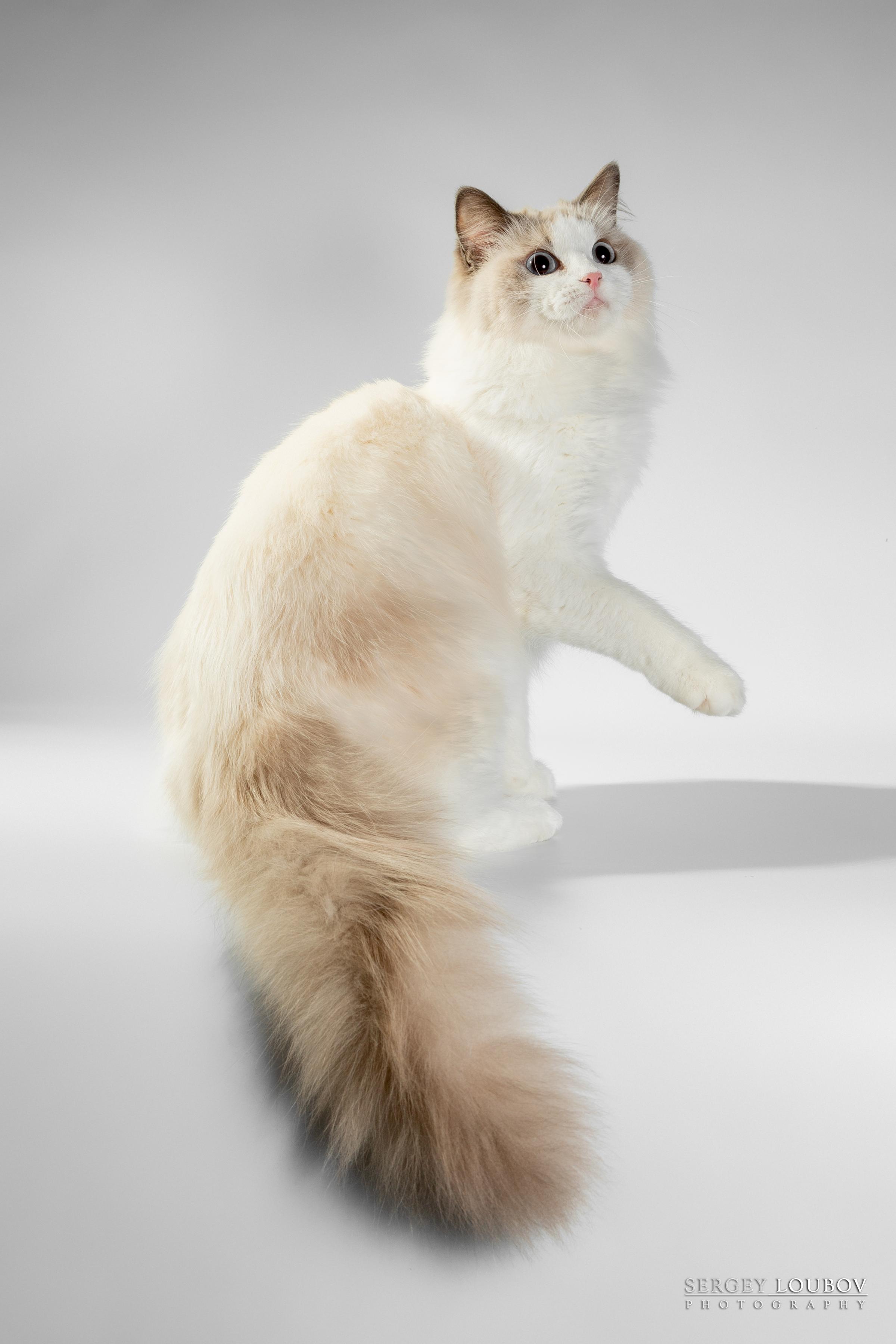The beautiful Ragdoll is a large sized, pointed cat with the most pleasant personality. The breed is a hybrid cat who was developed in the early 1960’s by Ann Baker. She bred a lovely cat called Josephine, who was believed to be a white Angora, Persian type to beautiful longhaired Burmese and Birman males. This resulted in the production of cats with a rather substantial size, a non-matting and soft textured coat. The kittens all appeared to have a true loving nature and striking blue ... eyes. Baker recognised their special essence and kept those with desired characteristics for breeding. The line of Ragdolls were bred very carefully. In fact, every single actual Ragdoll must be a descendent of Josephine. No other strain of Persian, Birman or Burmese has been introduced since Josephine’s initial litter. All the traits of the breed can only be traced back to Josephine’s descendants. Some looks may vary slightly, regarding the pattern and colour of the breed. However, no one, not even Ann Baker can add to the lines at this point and still produce a purebred Ragdoll.

About the Breed
The history of the Breed
Features of the Ragdoll
Ragdolls are born completely white or tinged with cream. After birth it takes, 7-10 days before their eyes open to reveal their striking blue eyes which remain that colour for their entire lives, the shades of blue in their eyes may vary from lighter to darker. The breed is slow maturing, therefore Ragdolls will not receive their full colour and size, until they reach 3-4 years of age. Males are known to be larger than females at 5.4 to 9.1 kg, or more. Ragdolls are very laid back and are floppy cats, with the ability to go limp when held, hence the name.
...Ragdolls have a very distinct semi-longhaired fur, textured like a rabbit. Their coat is known for its softness, it is non-matting, requiring minimal maintenance. The breed has little undercoat, causing them to be considered as low shedding and all they require is a weekly brushing to keep their fur healthy and good-looking.
The breed is known for being non-aggressive, therefore they are strictly indoor cats as their temperament prevents them from protecting themselves when exposed to danger. As well as their fur being unable to keep them warm enough to survive outdoors in harsh winter weather. The personality of the Ragdoll is very affectionate and loving, making them a desired breed due to their gentleness and love of humans. Ragdolls enjoy following their owners around, so I don’t think you would ever feel lonely with a Ragdoll. Believe me, once you own a Ragdoll, I doubt that you would ever want to own any other type of cat besides this breed.
How did they get their name as the 'Ragdoll'
The name ‘Ragdoll’ is derived from the common tendency of the breed to go limp and relaxed when held, like those rag-doll toys
Colours
Ragdolls are found in a large variation of different colours and patterns. They can come in the traditional standard and nontraditional standard. Our cattery solely produces Ragdolls under the traditional standard and does not breed nontraditional Ragdolls in mink, sepia and solid. Ragdolls are known for being a pointed cat with blue eyes, therefore they must not have any other eye colour besides blue, otherwise they are not a true Ragdoll.
Since we are based in Kazakhstan, we have ... decided to focus on bi-colours specifically as Ragdolls are incredibly rare in this country and we do not have a breed that resembles bi-coloured Ragdolls much. Therefore the patterns produced by our cattery are mostly bi-colours and can come with overlays of lynx and tortie, as well in a variety of colours, such as: seal, blue, lilac, chocolate, cream and red. However there are other patterns of Ragdolls, for instance: mitted and colourpoint.

